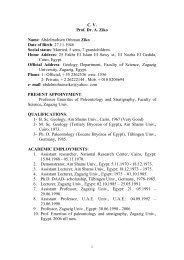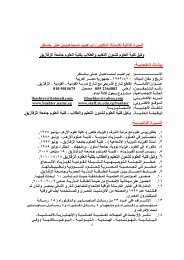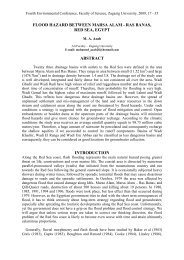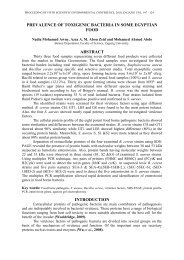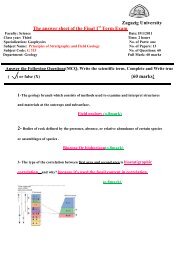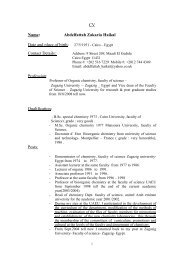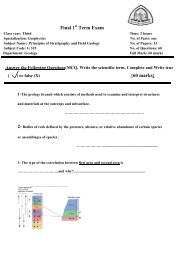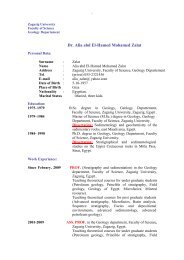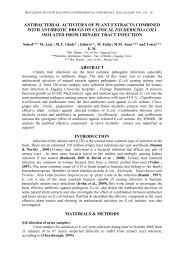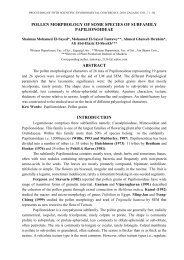GEOPHYSICS LETTERS
GEOPHYSICS LETTERS
GEOPHYSICS LETTERS
- No tags were found...
You also want an ePaper? Increase the reach of your titles
YUMPU automatically turns print PDFs into web optimized ePapers that Google loves.
Ghalib, M. et. al. 25vuggy porosity or not. When the bulk density correction curves (~p)show low reading, in this case the secondary porosity (the main partsof it) is not due to the fracture, but the main parts of the secondaryporosity, in this case, is related to vuggy porosity (Asquith andGtbson, 1982).By comparing the calculated porosities by sonic log and density login wells- 224 and 252 from Ras Gharib oil field, it is observed that theporosity calculated by density log is higher than that calculated bysonic log, this point to the presence of secondary porosity. The antherindicator, which represents the presence of secondary porosity in theHammam Faraun Member, is represented by shifting of the plottedpoints toward the secondary porosity on the M-N cross plots, asshown on the M-N cross-plots to the Hammam Faraun Member inwells-224, and 252 Fig. (10), as an example.We can relate these types of secondary porosities to vuggy porosity,which is very good indicator to that the section is carbonate build-up.This indication was carried out by using the bulk density correctioncurve (~p). By looking on the density logs in the available wens onthe log presentations of these wells, we found that the correctioncurves (~p) read very low values in these wells at the interval ofHammam Faraun Member. These indicate that the secondaryporosities are not due to fractures only, but the main part of it is due tovuggy porosity, which is a good indicator that the section is carbonatebuild-up.4- The vertical and lateral variations in the Hammam Faraunsection (zonation):The reefs are characterized by the minor geologic vicissitudes(variations) during its growth and subsequent history, which lied tothe horizontal and vertical variations in chemical composition, geoelectriccharacteristic and lithologic and porosity types within thereefs. These are the basic factors, which are used to differentiate thereef section into geo-electric zones (Waring and Layer, 1950). ElKadi et al. (2000) differentiated the Nullipore section in Ras Fanar oilfield into three distinctive rock types according to its capacitypressure, permeability, and density-neutron log response, which can



